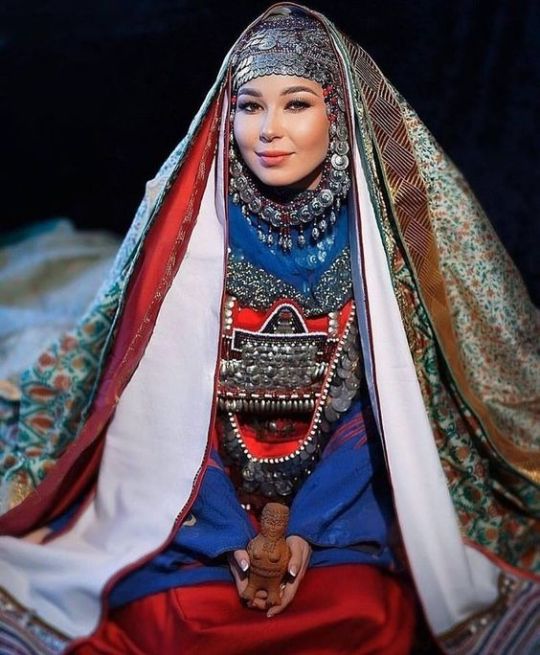#chuvash culture
Text
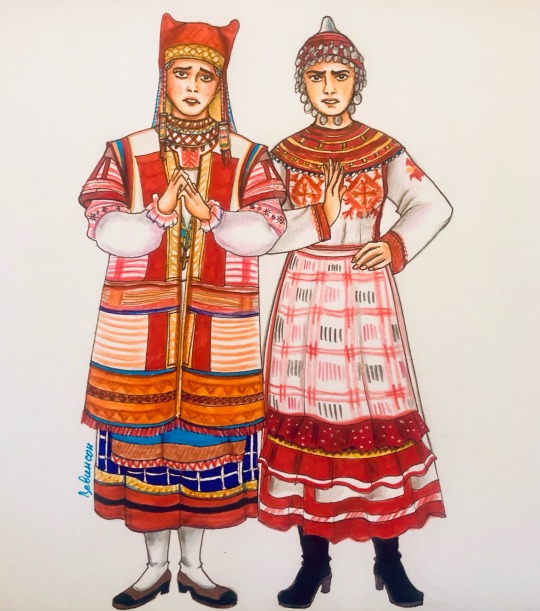
A final part of folk costumes requests! Russian folk costume (Ryazan province) and Chuvash folk costume! 🌺 Nastasya is looking for her husband at the fair, who is having fun somewhere, and her friend, Sarpige, says to her: “Stop messing around with this Vasily!”☀
Четвёртый и финальный реквест по народным костюмам! 🌺Рязанка Настасья ищет на ярмарке своего мужа, который где-то загулялся, а её подруга, чувашка Сарпиге, говорит ей: «Да хватит тебе уже васькаться с этим Василием!»☀


🌺Настасья родом из Михайловского уезда Рязанской губернии.
На голове у неё - рогатая кичка с низками бисера. Рога в народном представлении обладали большой обережной силой, особенно это было важно для женщин, ждущих ребёнка.
Юбка-понёва в синюю клетку и расшитая рубаха - это привычные элементы южнорусского костюма. Особое внимание привлекает верхняя одежда - прекрасный белый шушпан (шушун), богато расшитый и украшенный всевозможными узорами. В "Письме к матери" Сергея Есенина упоминается шушун ( а как вы знаете, поэт был родом из Рязанской губернии и имел характерный говор), так вот, шушпан - это туникообразная одежда, кофта, обычно с рукавами, крой у неё мог быть самый разный, но объединяющим мотивом служил белый цвет и красная отделка. Праздничные шушпаны дополнялись блёстками и обшивались шерстяными нитями.
Важнейшую роль в рязанском костюме играл бисер: в отличие от северянок, крестьянки южных губерний очень любили яркие тона. К ожерелью "ожерелку" крепилась бисерная сетка, сборками ложащаяся вокруг шеи. Круговые (вокруг шеи) и весовые (спадающие на грудь) ожерелья-монисты были очень популярны.


☀️Сарпиге одета в женский чувашский костюм, жаль только, я не знаю, из какой именно местности. Народ, одетый в серебро - так поэтично называли чувашей. Костюм отражал представление древних чувашей о мироздании, на него наносили знаки солнца, звёзд, луны.
Головной убор олицетворял собой небесный купол. Девичья тухья - шапочка из холста, с конусом-навершием из светлого металла. Тухья украшалась рядами бисера и монет, а застегивалась на шее ремешками, тоже с монетами. Они нанизывались определённым образом, чтобы создавать гармоничное звучание.
Рубаха была самой "консервативной" частью костюма, её шили из белого холста, украшали богатой вышивкой. Самым любимым мотивом в вышивке были ромбы (квадраты) и кресты. Узор всегда был довольно сложным, гармоничным, законченным. Спереди повязывался белый с пёстрыми акцентами передник.
В качестве украшений использовались бусы, несчётные цепочки бисера и монет. Нежный перезвон серебра и переливчатые движения света по бисерным рядам придают необычайную и неповторимую выразительность чувашскому костюму.


#folk costume#folklore#russian folk costume#russian culture#chuvash folk costume#chuvash culture#traditional art#traditional costume
41 notes
·
View notes
Text
I recently discovered a Chuvash indie-folk band called Tarai & i'm in love. Their music is absolutely beautiful.
youtube
"Tarai is а Chuvash indie-folk ensemble that bridges traditions and the spirit of indie music Tarai is founded at the crossroads of Europe and Central Asia. Itis а credit to 1.4 million Chuvashs living in Central Russia in the Volga River Region. Tarai performs original songs in Chuvash written with national poets not only because the frontman is a Chuvash. Chuvashs are direct descendants of ancient Bulgars and speak the only Iiving language in the Oghuric branch of the Turkic languages UNESCO listed the language as an endangered one in 2011"
-From their YouTube channel's "About" section
#Tarai#chuvash#chuvash language#chuvash culture#chuvash diaspora#indigenous russia#indigenous russian#endangered languages#linguistics#langblr#Oghuric#turkic#ethnic minorities#Youtube
34 notes
·
View notes
Text

Chuvash Female Breast Ornament
Чуашское Женское нагрудное украшение.
#Chuvashia#Чувашия#Chuvash culture#Культура Чуваши#indigenous russia#indigenous russian#non-russian#turkic
14 notes
·
View notes
Photo

The Chuvash (Russian: чуваши) are a Turkic people, related to the Oghurs, who are native to a region extending from Central-Western Russia to Siberia.
Many live in Chuvashia and ethnic communities throughout Russia, and continue to speak Chuvashi language, which diverged from other Turkic languages over a thousand years ago.
They have been subjected to much outside influence, not only from Russian and Turkic peoples, but also from neighbouring Finnic tribes, with whom they have been wrongly identified for centuries.
Today, many Chuvash practice a syncretised form of Orthodox Christianity and Shamanism.
Traditional clothing of Chuvash women is complex and varies greatly between regions. A distinctive feature is the rich ornamentation of headdresses and jewellery with decorative silver coins. The most unusual feature is called shulkeme - the breast adornment worn by a young married woman.
The full set of jewellery a Chuvash woman would wear during the ceremony could weigh up to 16kg. Traditionally, the size and weight of the jewellery displayed the wealth of the bride's family and was a fundamental part of her dowry.
The traditional headdress of a married Chuvashi woman is called khushpu.
It is worn over the surpan, a strip of white fabric with embroidery at the ends.
The khushpu pictured here is one of the oldest and rarest in existence, dating back to the 18th Century.
📸 Alexander Kimushin
292 notes
·
View notes
Text


Otoyomegatari
#turkic#turkish#traditional#türk#nomad#artwork#art#anime and manga#manga#otoyomegatari#turkmen#turkic culture#kazakh#kyrgyz#azerbaijani#chuvash#gagauz#uzbek#bashkir#girl
41 notes
·
View notes
Text

Chuvash costume by baltai_costume, model Polina Osipova
85 notes
·
View notes
Text
Chuvash folk song
#indigenous#indigenous russian#culture#indigenous russia#russia#important#colonization#fypシ#fypage#landback#chuvashia#Chuvash#indigenous music#indigenous people#Powerful#beautiful#musica#Music
17 notes
·
View notes
Text
🇺🇦 Чи знали ви, що Донецьк і Донбас як промисловий регіон було засновано валлійським підприємцем?
🏴 Oeddech chi'n gwybod bod Donetsk a Donbas fel rhanbarth diwydiannol wedi'u canfod gan entrepreneur o Gymru?
🏴 Did you know that Donetsk and Donbas as an industrial region were found by a Welsh entrepreneur?
🇺🇦 Джон Юз (Г'юз) приїхав у Дикий Степ в 1870х та відкрив кільках металургійних мануфактур, навколо яких виросло місто Юзівка, яке зараз ми знаємо як Донецьк.
Металургійний завод був доволі успішним, туди з Уельсу приїздили працювати висококваліфіковані фахівці разом зі своїми родинами. Однак після більшовицької революції завод було націоналізовано, а більшість валлійських робітників повернулися назад до Уельсу.
🏴 John Hughes came to the Wild Steppe in the 1870s and established metal works, later Hughesovka (Yuzovka), now known as Donetsk, was formed around the ironworks.
The ironworks used to be quite successful, highly qualified engineers with their families had been coming from Wales to work here. But after Bolshevik revolution the manufacture was nationalized and many Welsh workers had to come back to Wales.
🏴 Daeth John Hughes i'r Paith Gwyllt yn y 1870au a sefydlwyd gweithfeydd metel, yn ddiweddarach Hughesofka (Iwsofka), a adwaenir bellach fel Donetsk, o amgylch y gwaith haearn.
Roedd y gwaith haearn yn arfer bod yn eithaf llwyddiannus, roedd peirianwyr tra chymwys gyda’u teuluoedd wedi bod yn dod o Gymru i weithio yma. Ond ar ôl chwyldro'r Bolsieficiaid gwladolwyd y gweithgynhyrchu a bu'n rhaid i lawer o weithwyr Cymreig ddychwelyd i Gymru.
Source of photos: Glamorgan archives
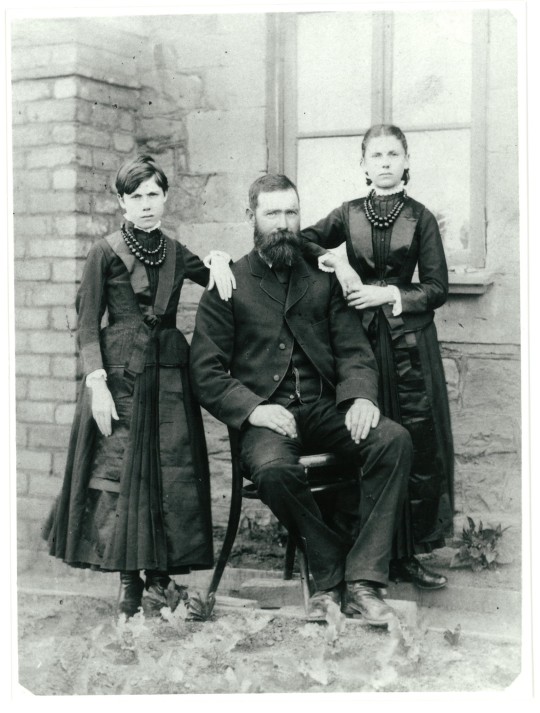





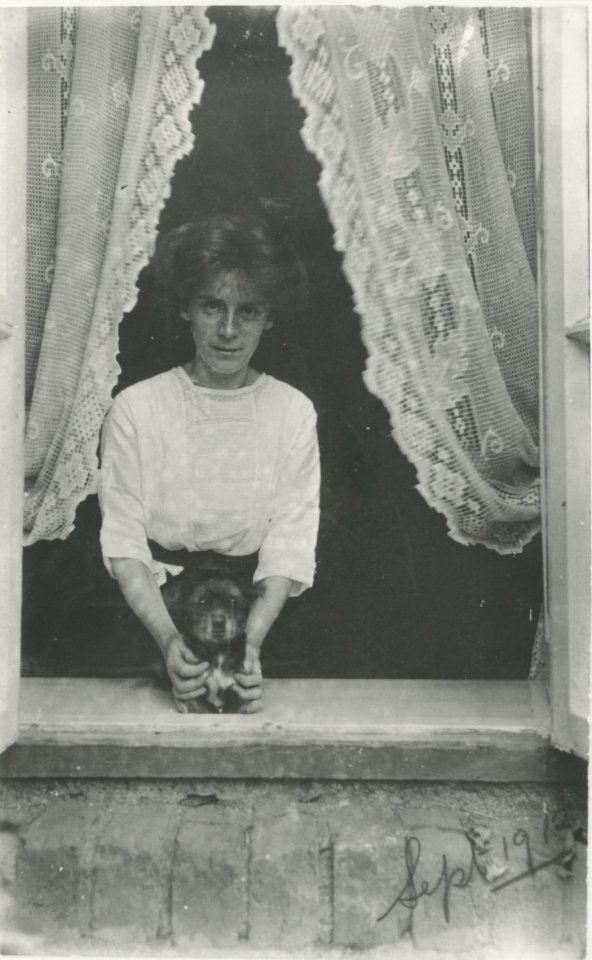



A girl on the last picture - John Hughes'granddaughter wearing supposedly russian peasant costume. It doesn't look like any russian folk costume and I don't know to which culture it actually belongs. Looks like the Chuvash one, but Chuvash in Eastern Ukraine?? I'm confused 😬
156 notes
·
View notes
Text
TURKIC RESOURCES
The Anthropological Masterlist is HERE.
The Turkic people are a Eurasian people that speak a Turkic language.
ALTAI ─ “The Altai people are a Turkic people. They are native to the Altai Republic in Russia.”
─ Altai Religion from the 1890s to the 1920s
─ Altai Language (in Russian)
CHUKCHI ─ “The Chukchi, or Chukchee, people are an Indigenous Russian people. They are native to the Chukchi Peninsula in Russia.”
─ Chukchi Information
─ Chukchi Mythology
─ Chukchi Language
CHUVASH ─ “The Chuvash people are a Turkic people. They are native to the Volga-Ural region of Siberia.”
─ Chuvash Culture & Dictionary
─ Chuvash History
─ Chuvash Phonetics
KOMI ─ “The Komi people are a Permian people. They are native to northeast European Russia, around the basin of the Pechora river.”
─ Permian Komi History
─ Permic Script
TATAR ─ “The Tatar people are a Turkic people that share the Tatar language. Historically, it was also used to refer to people that came from Tatary.”
─ Volga Tatars
─ Crimean Tatars (in Russian)
─ Tatar Language Dialects (in Russian)
TUNGUSIC ─ “The Tungusic people are a Tungusic people. They are native to Siberia and northeast Asia.”
─ Manchu-Tungusic People
TURKIC ─ “The Turkic people are an ethnic group that consists of anyone that speaks Turkic languages. They are native to many parts of Asia and Europe.”
─ Literature of the Central Asian Turkics
─ Turkic Mythology
─ The Turkic Expansion
TURKISH ─ “The Turkish, or Turk, people are a Turkic people. They are native to Turkey and northern Cyprus.”
─ Turkish Culture
─ The Ottoman Empire
─ Turkish Dictionaries
YAKUT ─ “The Yakut, or Sakha, people are a Turkic people. They are native to the Republic of Sakha in Russia.”
─ Yakut Information
─ The Yakut under Soviet Rule
─ Sakha Dictionary
196 notes
·
View notes
Photo

I’ve been wanting to draw Ion in traditional Sarkic clothing for a long time and finally powered through and finished this piece.
I was heavily inspired by Indigenous cultures of Siberia including the Tuvans, Yukuts, Chuvash as well as some Middle Eastern cultures like Turkey. I feel like all the Sarkics clothing would be a mix of all these cultures but Ion would have a more traditional appearance due to that being his birth place.
126 notes
·
View notes
Text
A peek into the ancestor veneration practices of the Chuvash people.
I grabbed the video from this YouTube channel.
#chuvash culture#chuvash folk belief#folk culture#indigenous russia#ancestors#ancestor veneration#holy queue
7 notes
·
View notes
Text
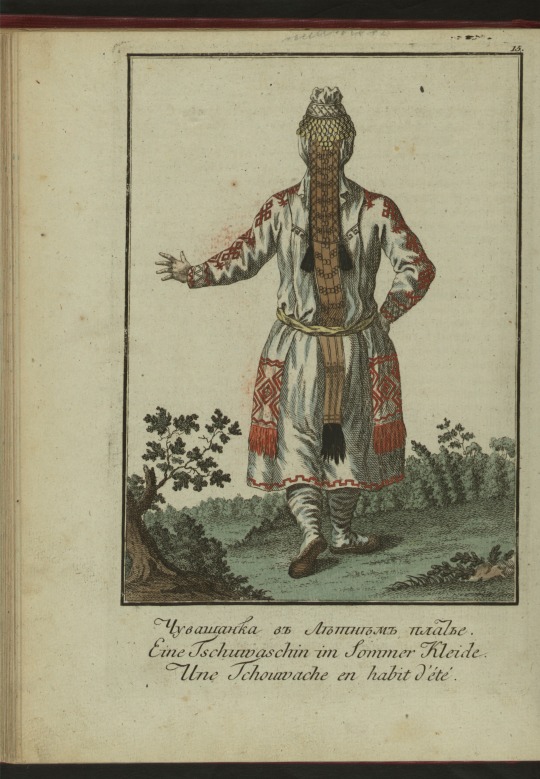
Chuvash woman in summer dress . 1776
Чувашка в летнем платье . 1776
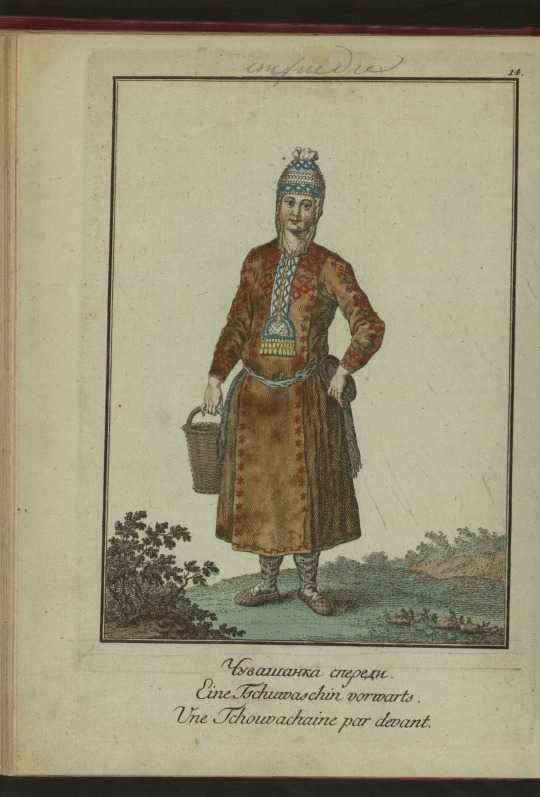
Chuvash woman. 1776
Чувашка. 1776
by Georgi, Johann Gottlieb Георги, Иоганн Готлиб из "Описание всех в Российском государстве обитающих народов, также их житейских обрядов, вер, обыкновений, жилищ, одежд и прочих достопамятностей".
#non-russian#indigenous russian#indigenous russia#turkic#Chuvashia#Чувашия#Chuvash culture#Культура Чуваши
18 notes
·
View notes
Text
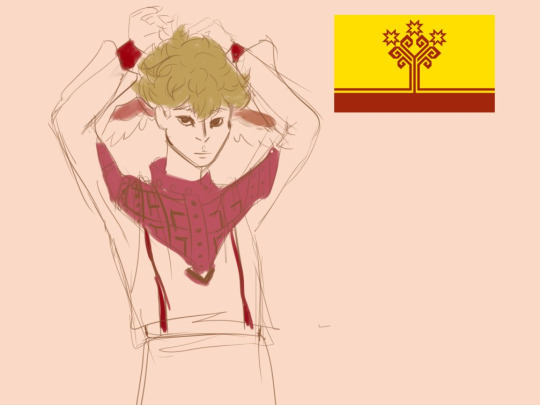
chuvash grian :)
chuvash people are indigenous people of russia speaking a language of a turkic family from an almost extinct branch. chuvash culture is actively being erased by the government. chuvash traditions are vibrant and are worth saving
please make sure you support north asian, indigenous and turkic artists of russia!! vk.com/tuzeek is a chuvash artist i took inspo from!
i’m also ndigenous to russia (tatar) so you can also support me ig......... \\\\
#grian#grianfanart#hermitcraft#hermitblr#hermitcraftfanart#grian fanart#chuvash#chuvashia#turkic#indigenous people of russia#russian minorities
45 notes
·
View notes
Text
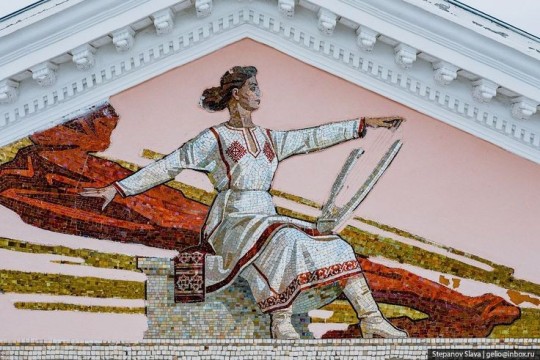
Chuvash
#chuvash#turkic#nomad#art#artwork#traditional#chuvash people#women#turkic architecture#architecture#history#culture
8 notes
·
View notes
Note
Likewise.
Hence why I plan on learning Syriac.
Like I said.
Outside of the Assyrian communities very few people speak it, aside from maybe some Maronites and some Indian Syriac Christians in Kerala.
Plus I figure I may as well learn something what with me being an Irishman what can’t speak Irish.
In addition to Syriac I also have plans to learn Armenian.
And perhaps even Navajo, Basque, Chuvash, Georgian and Adyghe (a Circassian language). Hypothetically…
My dream is to learn a million languages but I really doubt that’ll happen. I’m gonna try to get Hebrew down and after that I think I can get Arabic. Idk what other Semitic languages there are but I can probably get then. Idk what after that if anything.
I should’ve started with Spanish or something but I’m Ashkenazi Jewish so I have more cultural connection to Hebrew. Also considering languages from my European heritage (German, Russian, Ukrainian, Polish, Yiddish) but idk.
I also have a friend who’s Armenian, which is neat. We’ve only talked about that once tho and I probably don’t want to push her on that.
6 notes
·
View notes
